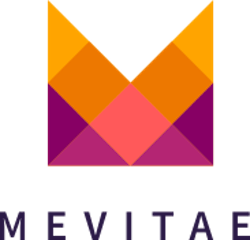Augmented Intelligence vs Artificial Intelligence
In the field of artificial intelligence (AI), science fiction has become science. Like the robot HAL from the film 2001: A Space Oddessey, it is now possible to install an algorithm as the captain of our ship. Algorithms can autonomously gather and process information, making decisions and direct action while we sit back and relax. However, proponents of augmented intelligence (also referred to as intelligence amplification, IA), would not like to see this scenario played out. So, what are the problems with HAL, and what solutions does IA offer?
The power of algorithms
Current machine learning algorithms outperform humans in many cognitive tasks. They are extremely good at gathering information, recognising patterns, memorising data, calculating probability and assessing risk. These skills are especially powerful in the area of big data. Namely, state-of-the art algorithms have solved some of science’s greatest challenges [1], improved fraud detection to save banks 20% of their total salary budget [2] and helped the UK’s National Health Service save lives by predicting COVID-19 patient demand [3]. As our society inevitably becomes more convoluted, decision-making requires the processing of evermore information, at ever-increasing speeds. Consequently, we are creating a world where machines will prevail.
What are the weaknesses of algorithms?
Despite their mind-boggling potential, algorithms are not without their limitations.
Firstly, algorithms rely on massive datasets for training, which are all too often unavailable. These datasets also need to be expertly curated to avoid the pitfalls of algorithmic bias. (Read more about algorithmic bias in this blog post).
Secondly, algorithms lack a crucial human cognitive skill: creativity. As 19th-century mathematician Ada Lovelace argued, “A machine cannot be considered ‘intelligent’ until it can come up with an idea that it wasn’t designed to come up with.” In order to test creativity, researchers have come up with the Lovelace test [4] passed only when the algorithm produces creative output - this could be anything from an idea or a poem to a business proposal. But there is a caveat: the algorithm’s designers must not be able to derive how their code led to the creative output… As of yet, no algorithm has passed the Lovelace test.
In fact, it turns out algorithms’ learning is neither flexible nor transferable: they often cannot apply their learned skills to new contexts and struggle to deal with outliers. Although algorithms are improving in these tasks, it seems clear that truly innovative ideas still have a uniquely human source.
IA: a human-machine symbiosis
Harnessing algorithms is an essential part of a future-proof society, but their limits show us that we cannot afford to dismiss our uniquely human strengths. While both augmented and artificial intelligence rely on the same technology, they differ in the way they use it. The quest of artificial intelligence is to find an algorithm that can match or even emulate human intelligence, eventually replacing it, like HAL replaced the captain on the space ship. The philosophy of augmented intelligence on the other hand is that we can combine human and algorithmic strengths, by augmenting human intelligence with the help of algorithms. The IA-HAL would work as an information filter: it would process large amounts of data about the ship’s surroundings and the electronics on board, and would then present this in small interpretable chunks to the human astronauts. They, in turn, can use the filtered data to inform their decision or create a new idea.
As algorithms’ impact on our lives continues to exponentially grow, no time is better than now to decide how we want to live with them. IA’s answer: we will harness algorithm’s strengths to propel us forward, while humans are still at the helm of the ship.
Author: Bernet Meijer (Data Scientist)
